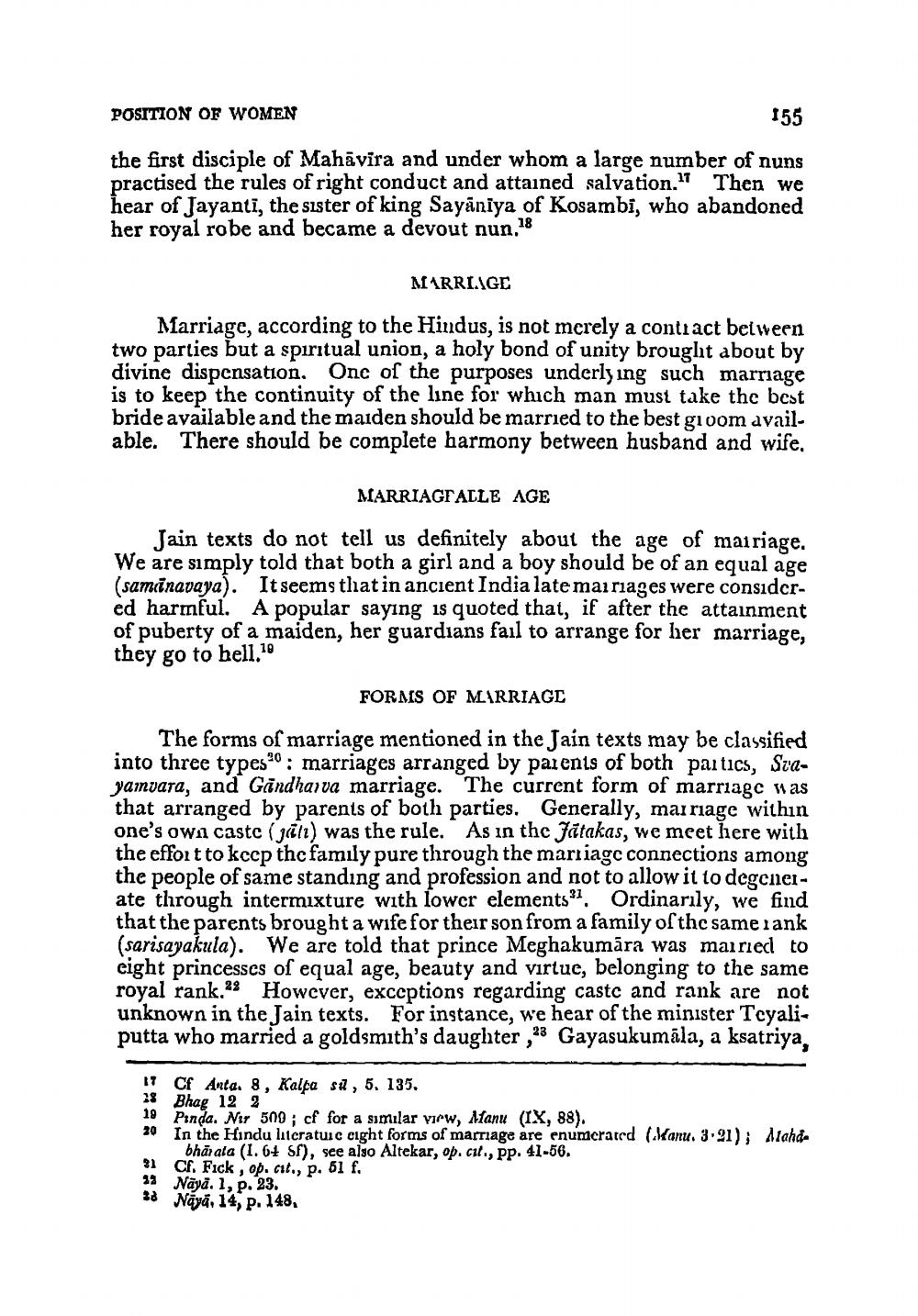________________
POSITION OF WOMEN
155
the first disciple of Mahāvīra and under whom a large number of nuns practised the rules of right conduct and attained salvation." Then we hear of Jayantī, the sister of king Sayāniya of Kosambi, who abandoned her royal robe and became a devout nun.18
MARRIAGE
Marriage, according to the Hindus, is not merely a contract between two parties but a spiritual union, a holy bond of unity brought about by divine dispensation. One of the purposes underlying such marriage is to keep the continuity of the line for which man must take the best bride available and the maiden should be married to the best gioom available. There should be complete harmony between husband and wife,
MARRIAGE ALLE AGE
Jain texts do not tell us definitely about the age of marriage. We are simply told that both a girl and a boy should be of an equal age (saminavaya). It seems that in ancient India late marriages were considered harmful. A popular saying is quoted that, if after the attainment of puberty of a maiden, her guardians fail to arrange for her marriage, they go to hell.19
FORAS OF MARRIAGE
The forms of marriage mentioned in the sain texts may be classified into three types: marriages arranged by parents of both partics, Srayamvara, and Gandharva marriage. The current form of marriage was that arranged by parents of both parties. Generally, marriage within one's own castc (all) was the rule. As in the Jatakas, we meet here with the effort to keep thc family pure through the marriage connections among the people of same standing and profession and not to allow it to degeneiate through intermixture with lower elements. Ordinarily, we find that the parents brought a wife for their son from a family of the same rank (sarisayakula). We are told that prince Meghakumāra was married to eight princesses of equal age, beauty and virtue, belonging to the same royal rank.22 However, exceptions regarding castc and rank are not unknown in the Jain texts. For instance, we hear of the minister Tcyaliputta who married a goldsmith's daughter, 23 Gayasukumāla, a ksatriya,
20
17 Cf Anta. 8, Kalca sü, 5. 135. 18 Bhag 12 2
Panda. Nir 500 ; cf for a similar view, Afanu (IX, 88). In the Hindu lucratuic cight forms of marriage are enumerated (Kanu. 3.21); Alahda
bhārala (1.6+ Sf), see also Altekar, op. cit., pp. 41-56.
Cf. Fick , op. cit., p. 61 f. 39 Naya. I, p. 23. 28 Nāyā. 14, p. 148,




